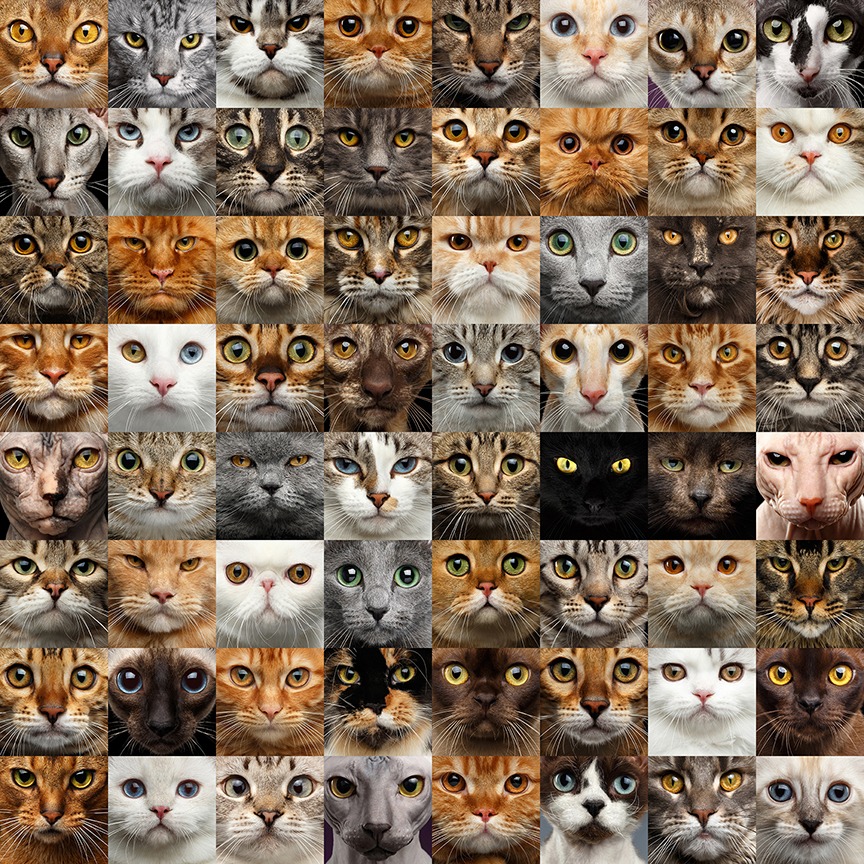
In the last post we examined cat patterns. In this post, we will examine a cat’s color. What we see is one way to describe a cat, but geneticists describe colors in a different way. It is helpful to have a cat’s pedigree to confirm the cat’s color and hue. Both pattern and color make your cat unique!
The various cat fur colors are:
1. A solid-coloredcat is all one color: Black, White, Blue, and Red.
a. Note: Cat genetics are designated by the actual primary color. These cats have blue or gold eyes.
b. Black cats are dominant and in breeding programs, breeders use black cats for their structure. The only color that blocks black is red.
c. Red or orange is also sex-lined. Most red cats are males.
2. The bi-coloredcat has two distinct colors, white and another color, such as blue, or in a tabby pattern. The term “Van”is used to describe a cat that has white color on the head and tail ONLY. These cats have blue, gold or can be odd-eyed, one blue and one gold.
3. A Tri-colorcat must have three distinct colors and include, red, black and a distinct white pattern (Cat Fanciers’ Association).
4. A tortoiseshell pattern includes only red and black and is linked to the female sex gene.
Dilute Gene
This gene causes the coat to appear as the lighter version of the dominant color. This gene is evident and causes a look that is light blue—looks like a light gray, lilac, and cream.

